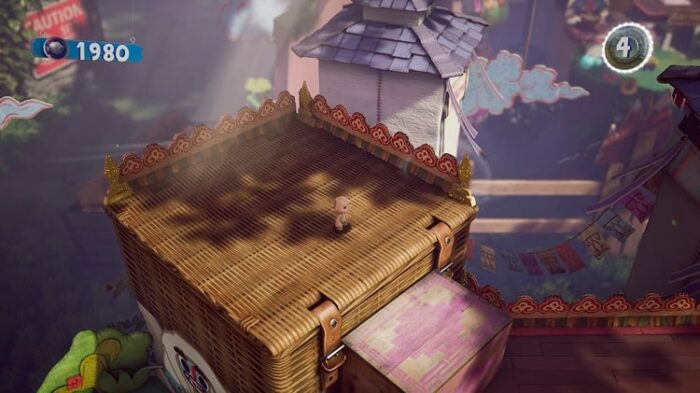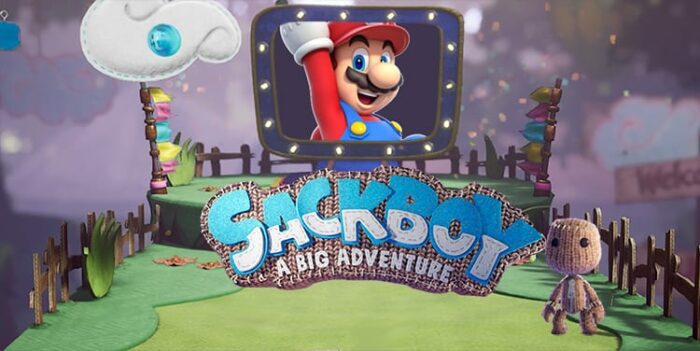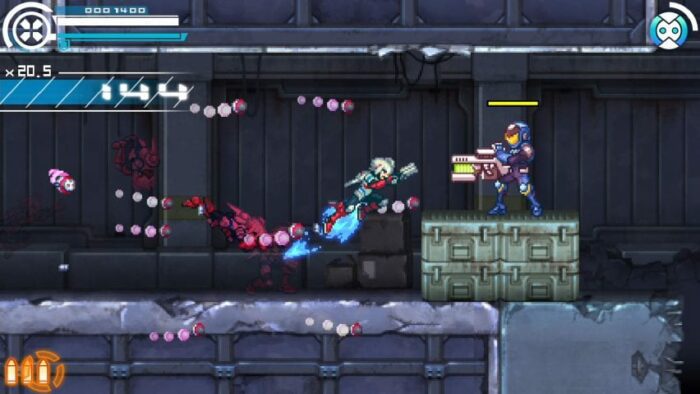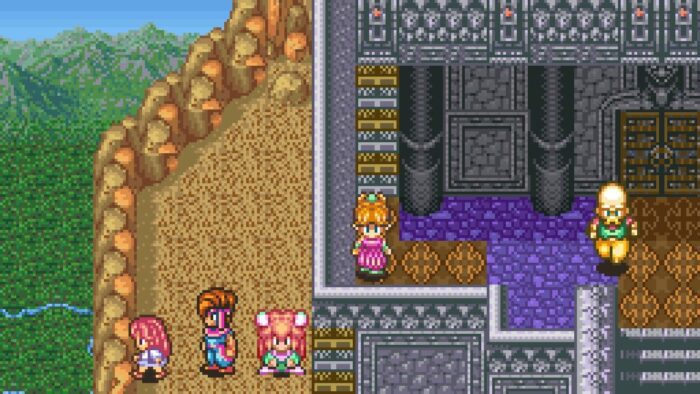We’re almost at the end of 2020, and if you exist on planet Earth, it’s been one hell of a year for you. Perhaps some light-hearted platforming might set you right? How about some old school RPG or action games? Or maybe you want something that will remind you of Breath of the Wild. There’s something for almost everyone in this edition of We’re Just Playing…
Johnny Malloy – Sackboy: A Big Adventure (PS4)
I saw a man in a red shirt today. I pointed at him and said, “Your shirt is red.” I didn’t really do anything there, observation-wise. At best, it was a routine check on the brain. Making sure my cerebral fitness was up to par. I was merely pointed out the painfully obvious. So when I say Sackboy: A Big Adventure is Super Mario 3D World with a killer soundtrack, I’m locating the red shirt in plain view. Anyone that has played the mostly-fixed camera Mario 3D games (World and Land) will know it from jump.
But it’s more than a vibe, there’s something a little too familiar. Whether it’s the cannon-like flowers you jump in to launch yourself from one section of a level to another, or the enemies that adorably barf up spiked bars that they then roll towards you (seriously, they kind of blatantly rip off Spike).
I’m reminded of when I played Castlevania: Lords of Shadow on the PS3, which I liked a lot. That game was a mish-mash of many things (mostly early God of War and Shadow of the Colossus) but it was a good time; it just didn’t feel like a Castlevania game, and I should know.
There are charming holdovers from the previous LBP games, so you can still make your hero run the gamut of emotions, while in a variety of wacky costumes. Costumes are bought at Zom-Zom’s shop, run by the LBP3 character himself (he’s a little much). You’re still collecting bubbles as well, although I haven’t slapped any stickers on anything besides my compendium that rewards stickers for completing all the level objectives. Just in case they remove them from the Deluxe version, Super Mario 3D World did give you stickers for a job well done after a level, too, but stickers were a LBP thing since the beginning, so I can’t really side-eye them for that one.

The graphics are fine, they’re not Ratchet and Clank levels as far as polish goes, but they get the job done. I’m sure there’s a marked difference when played on a PS5, if only to show people the generational differences.
I experienced one weird glitch when I went to Crablantis and the screen went black. I was able to fumble around in the dark and managed to find a level to play (thus avoiding a hard reset) so no harm done I suppose.
The game does attempt to switch things up, changing perspective from time to time, or having special levels like the one where you ride an out of control train (hopping on and off to retrieve key items and then hopping back on before you’re left behind).
Lastly, one thing the LBP series is known for is its music. There are great selections here, with Pepa Knight’s “Rahh!” kicking things off. It’s a song that came out 6 years ago, but it sounds like it was made just for the world of Little Big Planet. Other songs like “Big Wild” by Aftergold featuring Tove Styrke and The Go! Team’s “Mayday” are highlights. Toss instrumental remix versions of Madonna’s “Material Girl” and Aha’s “Take On Me” and you’ve got a damn fine soundtrack.

Sure, Sackboy: A Big Adventure is an amalgamation of Mario’s isometric 3D adventures with a Yoshi’s Wooly World coating, but it’s a fun and solid platformer. It lacks the creative ambition of latter day Donkey Kong Country and Rayman games (although it tries at times) but it’s a good time. It’s definitely what I’d call a Feel-Good Game.
Collin Henderson – Gunvolt Chronicles: Luminous Avenger iX and Collection of Mana
This past week or so I’ve been checking out two different but distinctly Japanese video games. The first one is Gunvolt Chronicles: Luminous Avenger iX. For those not in the know, the Azure Striker Gunvolt series is a side scrolling action game from the ever-reliable Inti Creates that—on paper—is a pretty shameless Mega Man knock off. You can approach levels in whatever order you desire, there’s a boss at the end you can usually steal the power of, and the pace in general is pretty fast and the games rather challenging. The one unique hook this series has is the idea of Tagging enemies. In the original two games, you play as the eponymous Gunvolt, who can damage enemies by Tagging them with his gun and zapping them with his electrical powers. The second game introduced Copen as a playable character. Whereas Gunvolt is more focused on dodging enemies while dealing constant damage, Copen is all about zipping around the screen; he essentially has rocket boots, and when he slams into enemies, they’re tagged, and he can unload on them for huge damage. For me, Copen was arguably more fun than Gunvolt in the second game, so the alternate timeline spinoff starring Copen feels like a natural conclusion until the proper third game releases.
And Luminous Avenger iX very much delivers on the promise of that kind of action. Zipping around the screen as Copen is great fun, and the game as a whole has an extremely snappy pace. You’re pretty much constantly moving forward and wrecking enemies, and the bosses do a good job of testing your skills, particularly near the end. It’s very iterative as opposed to innovative, but for my money, the Azure Striker Gunvolt franchise delivers a nice modern twist on the Mega Man formula by providing blistering action and a more balanced difficulty curve. Just ignore the story. The first game was rather clear cut, concerning people with elemental powers and a corporation hunting them down, but things get stupidly convoluted in the second game and this spinoff does nothing to alleviate the confusion. I tuned out during the story segments, but that’s fine because the core combat is great. Also be warned that it contains some of anime’s worst tropes, including an edgy protagonist who is just too cool for school and repetitive voice lines you, for some reason, can’t turn off.

The other game I’ve been playing is Secret of Mana from the Switch based Collection of Mana. The first game in the series, Final Fantasy Adventure, was rather frustrating for me, and its beloved follow up is sort of in the same boat for me. The presentation is great, with bright, vibrant graphics and a real banger of a soundtrack, and I like the game’s “ring” system and how it streamlines inventory management. Rather than navigating clunky menus, you can pull up a character’s inventory and circle around a wheel for different things like armor and weapons, and it really keeps the game’s pace going. That being said, the game itself is kind of a frustrating mess.
In keeping with the ARPG nature of Final Fantasy Adventure, Secret of Mana focuses on real time hack n slash combat with a party of three. It’s pretty simple, as is the story, which is very much a “find the 8 McGuffins to save the world” kind of thing. I find the execution of this combat… problematic, though. A cool thing the game does is allow any character to wield any weapon and level up their own affinity for that type, but the balance is horribly lopsided. You can get a boomerang, a throwing spear, and a short bow for ranged weapons, for instance, and the favor almost always falls to the short bow. It has a better range and generally does more damage than the other two choices. Same goes for melee weapons; the spear has longer reach than the others, and usually does more damage.

Further problems arise with how the game executes damage. I don’t know if it was intentionally designed this way or if it’s a result of the SNES hardware not being able to handle the creators’ vision, but there’s severe input lag with enemies receiving damage. If one of your AI controlled partners damages an enemy, they might fall down, and if you try attacking them again, it takes a second for the hit to register… if it does at all. The game does a very poor job of telling you when you’ve missed an enemy. You can be right next to them and swing and nothing will happen. It leads to a lot of weird trial and error guesswork, and for a game that touts real time combat, that’s a problem.
Such has been my experience with Secret of Mana so far. I’m right around halfway through, and I find it terribly uneven. There’s a lot to love here, but there are also a lot of questionable design choices that make it feel more uneven than it should. At this point, I’m kind of struggling to see why this is such a beloved classic, although I’ll admit to having not tried out the cooperative multiplayer. Maybe playing with a friend makes it more enjoyable, but for right now, Secret of Mana is a game that is letting me down considering all of the hype that’s been generated around it for years.
Hawk Ripjaw – Immortals: Fenyx Rising
Immortals: Fenyx Rising is a tremendously enjoyable open-world adventure, combining elements of Assassins Creed and The Legend of Zelda: Breath of the Wild in a Greek mythological world in which the vengeful Typhon has stripped the gods of their powers, leaving the lowly Fenyx to save the world and restore the gods to their roles and defeat Typhon.
What really sets Immortals apart is its personality and comedic trappings. The game boasts an uproariously cornball sense of humor, as Poseidon’s narration plays over the action with frequent interjections from Zeus. Sometimes, the two argue over a plot element and a boss battle suddenly changes based on who is narrating. Other times, the two will bicker over some past event brought back to light with whatever is currently happening in the story. It’s consistently laugh-out-loud funny, and made even better by the daring choice to frequently contemporize the humor. Zeus and Poseidon make pop culture references, mention the Internet, and so on. On paper, it’s an awful idea, but in the game itself, it works remarkably well owing mainly to the commitment to and confidence in the style.
It also refreshingly (sort of) breaks away from the Ubisoft open-world blueprint, while sticking close enough to it to be familiar. I haven’t started playing Assassin’s Creed Valhalla yet, but I understand that a full, complete 100% playthrough could take well over 100 hours, with a lot of those hours starting to get repetitive. Immortals is much smaller, both in map size and gameplay length, but the map is also densely packed with environmental puzzles, enemy squads, surprise boss battles and collectables. The design is very economical and it’s rare to go too long without encountering something new. The combat system will be almost instantly recognizable to Assassin’s Creed veterans, but it works well here.
Finally, the game serves as a surprisingly robust lesson in Greek mythology. Even as a mythology enthusiast myself, I found myself learning little details I either didn’t know or had forgotten about. The character and lore details are all, as far as I know, completely accurate to the texts, and presented in a way that feels organic to the narrative and not in a sort of pompous “told ya” way that robs the player of an agency in exploring the world.
I am really digging Immortals. It looks great, it feels good and the interplay between Poseidon and Zeus, anchored by the writing and performances, give the game an infectiously fun sense of personality. There’s a real sense of soul to the game’s design, and it makes it absolutely worth a look.


